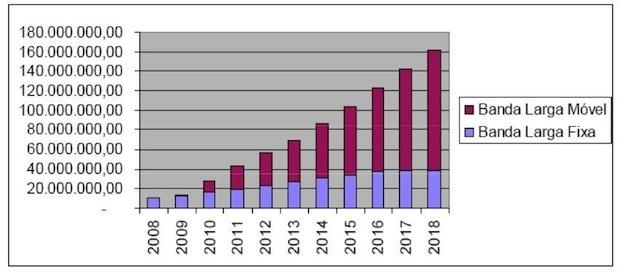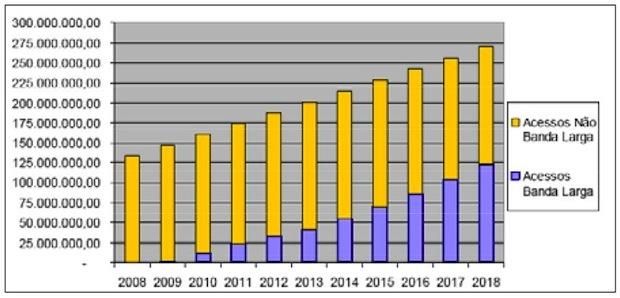Plano Nacional de Banda Larga in Brazil
The national broadband plan is a very hot topic in Brazil at the moment and it's likely to be for many years to come. This article will outline the most important aspects of Plano Nacional de Banda Larga.
Plano Nacional de Banda Larga is the largest infrastructure project ever carried out in Brazil. It's literally affecting every single Brazilian municipality and millions of people.
Goals
Plano Nacional de Banda Larga, also known as PNBL, is presented as the "communication platform for the future" for Brazil.
The overall goals for Plano Nacional de Banda Larga are:
- Digital inclusion between all classes
- Increase the base for e-Government activities
- Increase economic growth
All parts of the Brazilian society will benefit from Plano Nacional de Banda Larga, this including private citizens, companies and public institutions.
For private citizens, Plano Nacional de Banda Larga promises lower prices for a minimum broadband service. It's estimated that before the implementation of Plano Nacional de Banda Larga an average Brazilian household is spending 4.5% of its income on broadband services every month. In comparison, in developed countries broadband connections account for only 0.5% of the monthly household costs.
Businesses will also benefit from Plano Nacional de Banda Larga, first of all with a better service coverage to smaller cities and with better speed than what can be experienced today.
Currently 34% of all Brazilian broadband connections are 256 kbps or less.
Actions
Plano Nacional de Banda Larga guarantees deployment of broadband backbone to every single municipality in Brazil.
The plan has clear action points:
- A governmental controlled national backbone
- Tax incentives for service operators
The government have appointed Telebrás to manage the national backbone. Telebrás used to be the Brazilian state-owned monopoly telephone system but they are not actively operating since 1998 when the Brazilian telephone monopoly was ended.
In municipalities without competition for the last-mile delivery of broadband services special measures will be taken by the government to make sure that the end-customer will benefit from the lower prices.
Timeframe
Plano Nacional de Banda Larga will start having a real effect in the Brazilian market by the end of 2010; that's when the 100 first municipalities are planned to be completed. The entire plan is expected to be completely implemented by the end of 2014.
Below you can see the figures of expected growth in Brazilian broadband penetration:

Banda Larga Móvel is a mobile broadband whereas Banda Larga Fixa is cabled broadband.
The graph bellow explains the relation between population growth and expected broadband penetration over the next 8 years:

Yellow shows citizens without broadband access whereas purple represents citizens with broadband access.
Broadband Price
The final price point is still undetermined, but some states have already implemented tax incentives for providers that supply broadband connections to less than BRL 30 a month (USD 17). At the moment this only applies for the states of São Paulo, Pará and Federal District.
Earlier the communication minister Helio Costa said that the prices for broadband connection should be as low as BRL 9.90 per month (USD 5.50) when Plano Nacional de Banda Larga is fully implemented.




